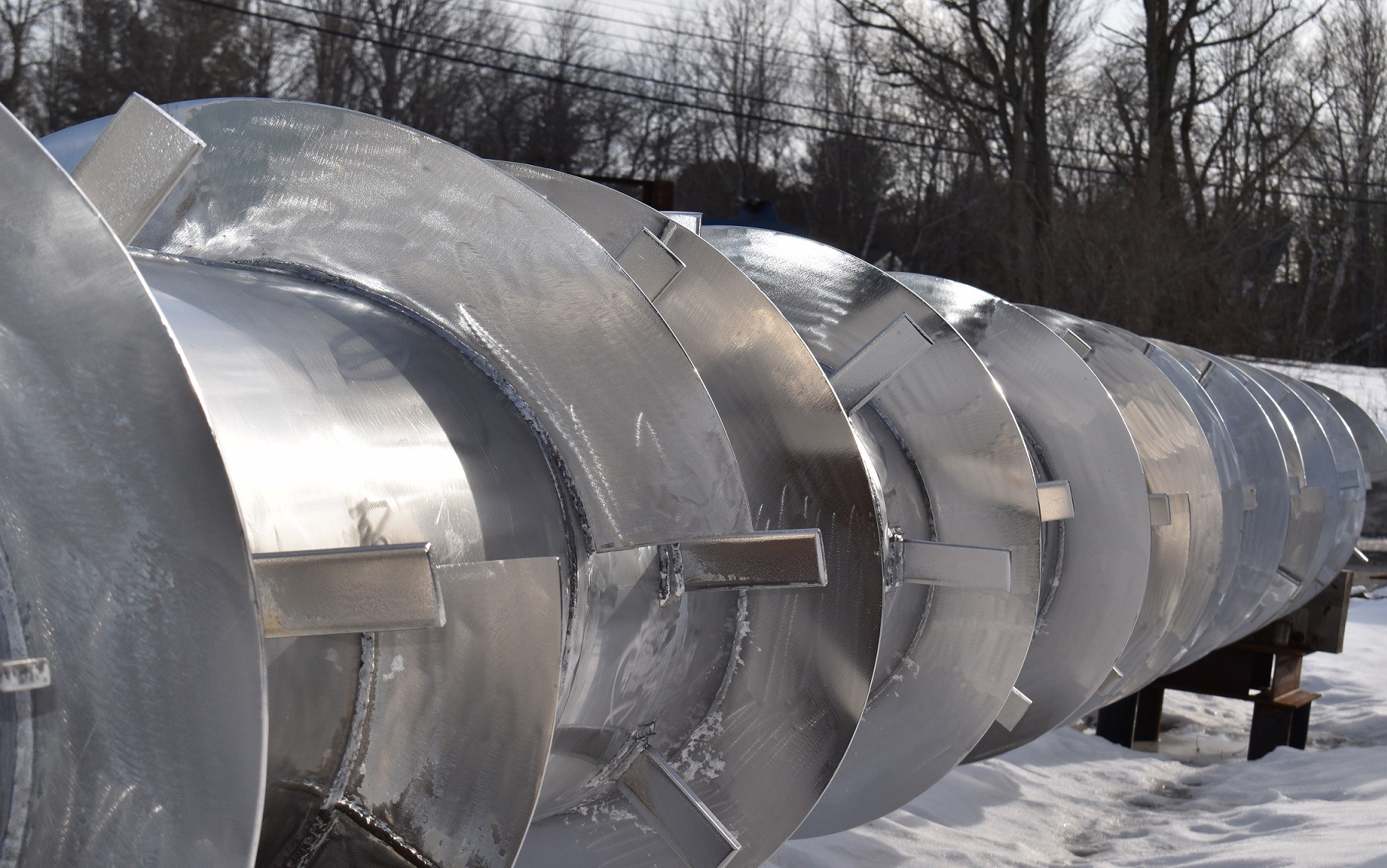Selecting the Most Efficient Screw Conveyor
for Your Application
At Troy Industrial Solutions (TIS), we know how crucial efficient material handling is for your business. Regardless of industry, screw conveyors are indispensable for moving bulk materials smoothly and effectively. Providing screw conveyors since 1978, we’ve seen firsthand how the right equipment can transform operations. In this blog post, we’ll give you some things to think about when selecting the most efficient screw conveyor for your specific application. We aim to help you make an informed decision that enhances productivity and keeps your operation running smoothly. Let’s dive in and explore how to choose the perfect screw conveyor for your needs!
Key Considerations for Selecting a Screw Conveyor
1. Material Properties
The first step in selecting the right screw conveyor is understanding the properties of the material you need to transport. Consider the following factors:
- Bulk Density: Heavier materials require more robust screw conveyors to handle the load without compromising efficiency.
- Flow Characteristics: Free-flowing materials like grains require different handling compared to sticky or cohesive materials like sludge.
- Particle Size and Abrasiveness: Fine, abrasive materials can wear down the conveyor components faster, necessitating durable construction materials.
Example: In the food processing industry, a screw conveyor transporting grains will differ significantly from one moving sticky dough.
2. Flow Rate
Flow rate, or the volume of material to be moved per unit of time, is crucial for determining the conveyor’s size and speed. Accurate flow rate calculations ensure the conveyor meets your production requirements without causing bottlenecks or overloading the system.
Example: A screw conveyor used in a manufacturing plant to transport raw materials to different processing stages must match the plant’s overall production speed to maintain efficiency.
3. Distance and Elevation
The distance and elevation of the material that needs to be transported will impact the screw conveyor’s design. Horizontal, inclined, and vertical screw conveyors each have specific capabilities and limitations.
- Horizontal Screw Conveyors: Ideal for transporting materials over moderate distances on a horizontal plane.
- Inclined Screw Conveyors: Designed to move materials at an incline, requiring more power to lift the material against gravity.
- Vertical Screw Conveyors: Used for elevating materials to higher levels, typically requiring a robust design due to increased power demands.
Example: In a mining operation, a vertical screw conveyor might be used to lift excavated material to the surface, while horizontal conveyors transport it to processing areas.
4. Environmental Conditions
Environmental conditions play a significant role in determining the appropriate screw conveyor design and materials. Factors such as temperature, humidity, and corrosive substances can affect the conveyor’s performance and longevity.
- Temperature: High-temperature environments require screw conveyors with heat-resistant materials to prevent deformation and maintain efficiency.
- Humidity and Moisture: High humidity or moisture levels can lead to material clumping or sticking to the conveyor. Stainless steel or other corrosion-resistant materials can mitigate these issues.
- Corrosive Substances: If the material or the environment is corrosive, selecting materials that resist corrosion, such as stainless steel or coated components, is essential.
Example: In a chemical processing plant where materials are exposed to corrosive substances, corrosion-resistant conveyors are critical to maintain operational integrity and prolong the equipment’s lifespan.
5. Efficiency and Energy Consumption
Efficiency and energy consumption are paramount for reducing operational costs and promoting sustainability. A well-designed screw conveyor should optimize the power used to transport materials while minimizing energy waste.
- Design Considerations: Properly sized screw diameter and pitch, along with optimal rotational speed, contribute to efficient material movement.
- Energy-Efficient Motors: Selecting energy-efficient motors and drives can substantially reduce energy consumption and operational costs.
Example: An automated manufacturing facility may opt for screw conveyors with energy-efficient motors to reduce electricity usage while maintaining high productivity levels.
Conclusion
Selecting the most efficient screw conveyor for your application involves a thorough evaluation of material properties, flow rate, distance, elevation, environmental conditions, and energy consumption. By understanding these key considerations and how they apply to your specific needs, you can make an informed decision that enhances productivity, reduces downtime, and lowers operational costs. At TIS, we are committed to providing expert guidance and high-quality solutions tailored to your unique application.
We are Here to Help
For expert guidance on selecting and maintaining the ideal screw conveyor for your needs, reach out to Troy Industrial Solutions. Our specialists are prepared to assist you in achieving efficient material handling. Visit our FAQ’s on Screw Conveyors and contact us here to learn more or request a discussion.









